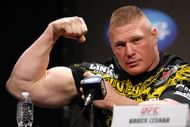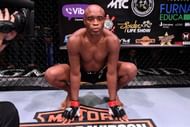When the UFC was in a near $40 million hole and closure of the promotion looked likely, Dana White and Zuffa rolled their last dice. They stepped outside the bounds of their tried and test pay-per-view model and spread their net into free television.
The idea arose from Lorenzo Fertitta’s experience on another reality show, American Casino. Realizing that the format of reality TV would be a perfect promotional vehicle for new fighters, the UFC developed the idea for ‘The Ultimate Fighter.’
The premise: 16 up-and-coming MMA fighters would be featured on the show and the winner would receive a six-figure UFC contract. Fighters would be eliminated from the competition via exhibition matches.
The UFC began pitching the idea to various TV networks and received outright rejection from them all. When Spike TV expressed reluctance to put the show on their air waves, the UFC offered to pay the $10 million production costs themselves, a condition that eased the worries of the executives at Spike.
The Ultimate Fighter was launched in January 2005 on the same time slot as WWE Raw. The show became an instant success, with fans emotionally invested in the stories of these young fighters chasing their dream.
However, by the time of the season finale, the UFC still did not have a deal to air the second season of the show. The final bout, for the six-figure contract, was between Forrest Griffin and Stephan Bonnar, a fight that Dana White credits for saving the UFC.
The Griffin/Bonnar fight became one of the greatest in MMA history, and is widely regarded as the greatest fight in the history of the UFC and certainly the most important one. Griffin beat Bonnar via a close decision, but such was the quality of the fight that the UFC offered both men contracts with the promotion.
Following the success of the first season of the Ultimate Fighter, Spike renewed the program for another two seasons. Spike continued to work with the UFC to launch new shows that gave an insight into the preparation and dedication of fighters. This resonated with the fans, and helped establish the UFC as a respectable brand and MMA as a respectable sport.
With increased visibility and surging popularity, the pay-per-view figures the UFC drew exploded. UFC 52 drew double the previous high in terms of views for UFC events. Following the second season of the Ultimate Fighter, UFC 57 set a new PPV buy rate record.
With the UFC bigger than ever, they began attracting some of the greatest mixed martial artists ever seen.
The first superstar that emerged was former NCAA wrestler and WWE champion Brock Lesnar. Lesnar would go on to win the UFC Heavyweight championship, and owns wins over legends like Frank Mir and Randy Couture.
Lesnar brought mainstream attention to the sport, the like of which had never been seen before. Every time he fought was a special occasion. There was a different feel to an event that was headlined by Lesnar.
Alongside Lesnar, the light heavyweight division had a superstar of their own. Chuck Liddell was the prototype MMA fighter. He had the look, the attitude and the talent. Liddell’s knockouts became iconic and were played over and over again. He became the first ever ‘face’ of the UFC.
Liddell was a trailblazer who would eventually end up in the UFC Hall of Fame.
Then came arguably the two greatest MMA fighters of all time – the Canadian Georges St Pierre and Brazilian Anderson Silva. They reigned over the welterweight and middleweight divisions respectively, and almost every UFC fighter today will cite one of these two as their role models growing up.
St Pierre would retire in 2013, still at his prime, still at the top, ending an unprecedented 6 year run as champion. Silva is still in the UFC and is expected to return to the octagon around April.
With the superstars came sponsors, television coverage and mainstream media attention that propelled the UFC to the next level. However, there was still a frontier unconquered, a path waiting to be explored, a new era waiting to be born – for all its success, the UFC still did not have a woman’s division.
Ronda Rousey was about to change all of that....and more!
Check out the first, second and third entries in the series.


